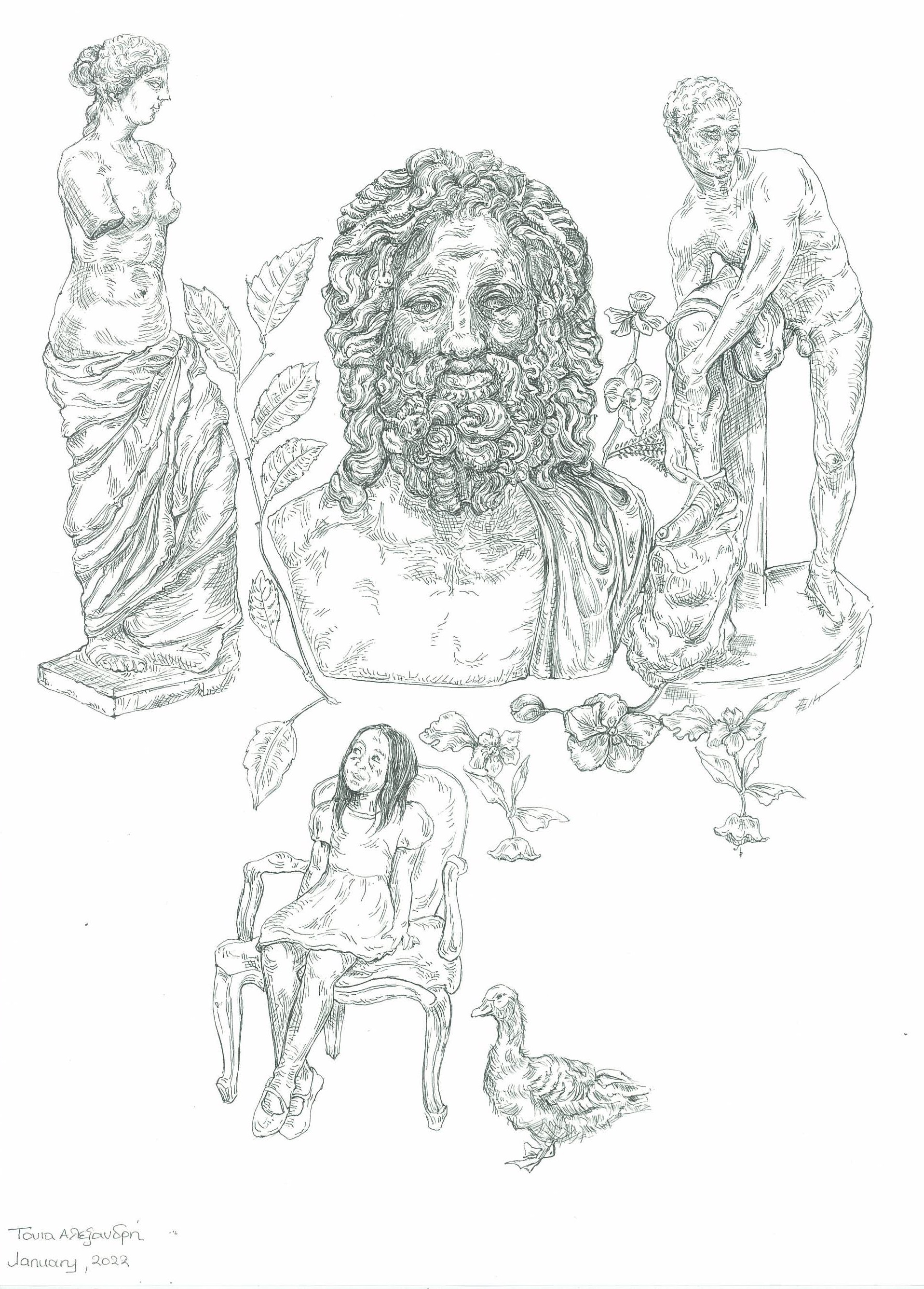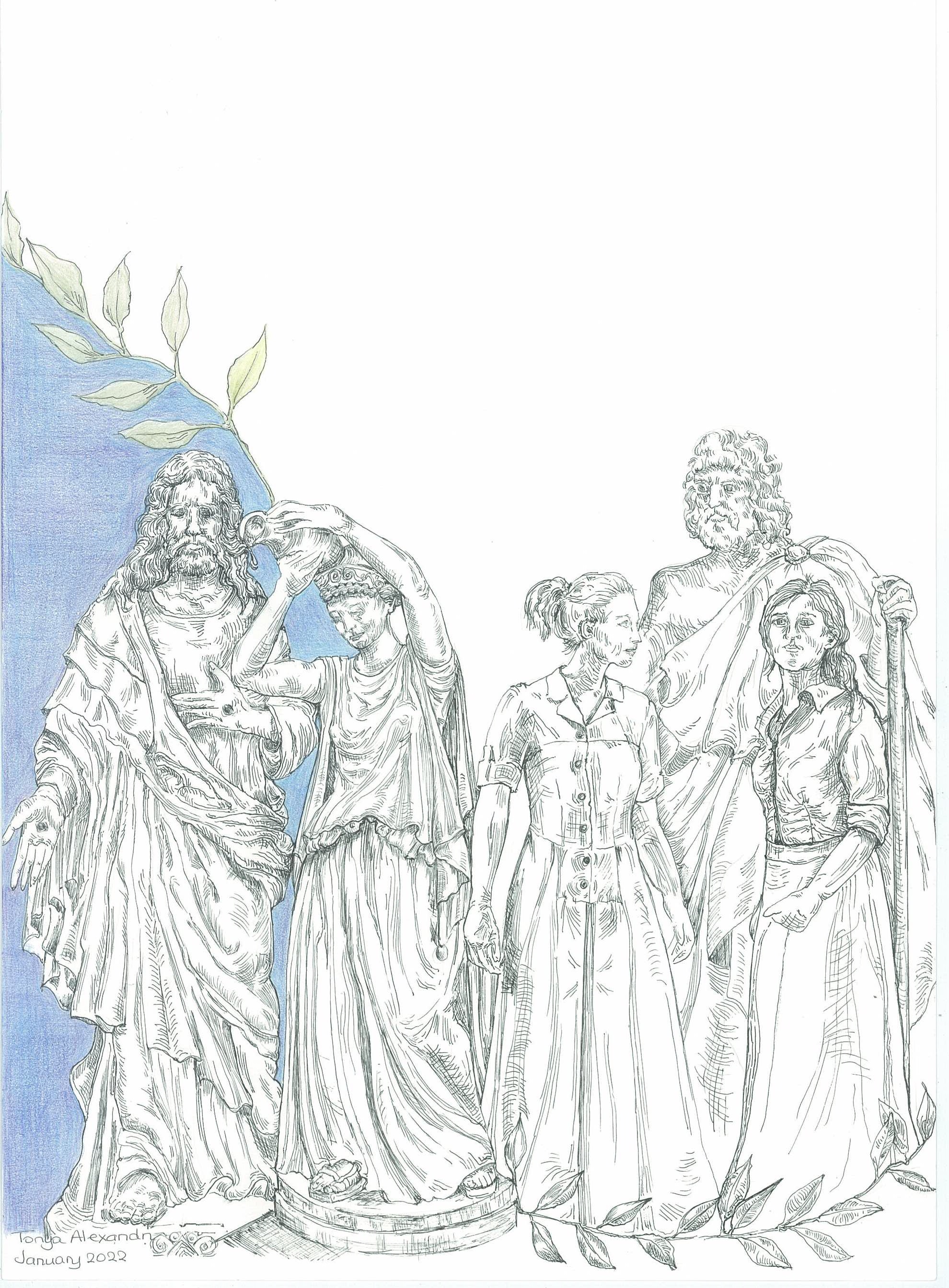Part five
Myths: sight
Today I’m posting two more drawings with a myth related theme. During my engagement with ancient myths through reading, writing and drawing for quite some time now I looked up the frequent theme of blindness and its function in Greek mythology. It seems that Greek myths are characterized by many meanings and functions of blindness _ from blinding as a means of punishment and exercising of power to associations with talents in the areas of music and prophecy, and even insanity. Tiresias is one well known example of blindness and wisdom and prophetic insight. Blindness also appears as a metaphor, as in the case of Oedipus, a well known blind figure in Greek ancient mythology that I’ve depicted in one of my drawings. Oedipus’ lack of insight about reality leads to tragedy and his loss of sight. Following his self-inflicted blinding Oedipus undergoes an inner change. His loss of vision is exchanged with insight about reality and his personal life and relationships.


My intention is to complete this series of posts and drawings with myth related themes in the next post, at least for the time being. Meanwhile I have bought an interesting book by Francesca Stavrakopoulou, who studied theology at Oxford and is currently Professor of Hebrew Bible and Ancient Religion at the University of Exeter, author of academic works, and has also worked in television. The excerpt below on vision is from her recent book, God: An Anatomy.
“In a post-Enlightenment world, we are accustomed to setting our sense of sight within a context of spatial and conceptual distance: what we see is either near or far from us, and it remains separate from us. Our eyes have become corporeal cameras, rendering our optic lenses panes of glass through which we view the ‘outside’ world. But in ancient south-west Asian cultures (as in many others), seeing was not a remote, objective process operating distinctively or independently of the body’s other senses. Instead, it was perceived as a reflexive, haptic (or tactile) sensation: the eyes could receptively feel what was seen, and actively affect or touch what they saw. Seeing, and being seen, were bodily encounters, rendering visual contact a form of physical contact – especially when seeing took on the intensity of looking or gazing…” (2021)
